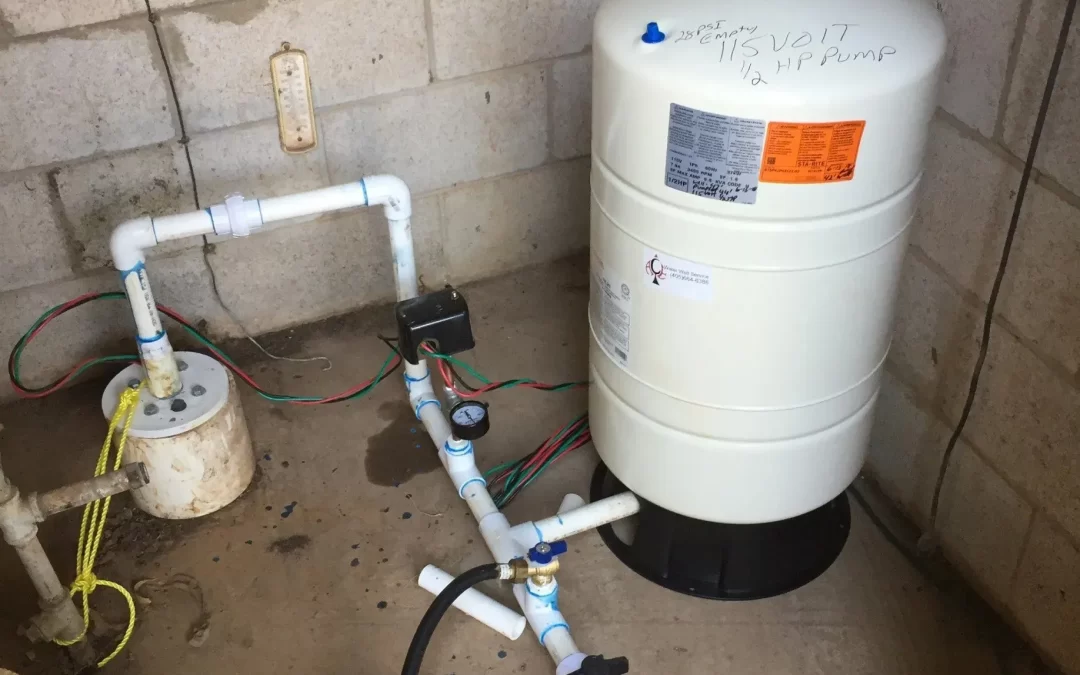It often comes to pass that people who move into a new home are unfamiliar with where their water comes from. Unless you were raised around well water, you might be of the opinion that water comes from the kitchen faucet. The majority of the water we drink in the Oklahoma metro area is well water. Even the city water is most likely drawn from a well at some point. Oklahoma has some of the richest water resources for ground water. Often unseen and ignored because it is deep below the ground surface, Oklahoma’s aquafers spread deep and wide across the state and provide a large percentage of the population with life sustaining water. Here are 5 terms every homeowner with a water well should familiarize themselves with.
- A pressure tank is what regulates your house water pressure and allows the pump to work most efficiently. The pressure tank is a large, often blue in color, metal tank with water lines and an air line going into the tank. Although there are many kinds of older systems, the current standard is a bladdered air tank. They can be small at 20 gallons in size, roughly three feet tall, or they can come in a variety of larger sizes. The tank is usually located in a closet, basement, well house, or in some occasions can be buried underground near the well itself.
- The pressure switch is the small electrical device that uses water pressure to trigger a physical mechanism to close or open and electrical connection that powers the pump or sends a signal to control device that powers the pump. The pressure switch is often located right near the bottom of the pressure tank, or it should be at least three feet from the tank to work effectively.
- The pressure gauge is the meter that shows you the amount of water pressure in the water supply pipe. These gauges use a soft bent metal tube that straightens out as water pressure increases. Being able to read the water pressure is important to determine if your pressure tank and pressure switch are operating in the correct range.
- The well head, is the part of the well you see above ground. These can be configured in a variety of ways, but should always extend above the surface in such a way as to prevent anything from entering or draining into the well. Your well head will have water pipe and electrical lines leading into the well if you have a modern submersible pump system. It is important to protect your well head from overgrowth while also making sure that it sits high enough above the surface that rain water or other contaminants can’t make their way down the well.
- The pump is the part of the system that provides water flow to your system. A submersible pump is the most common and sits at the bottom of a long length of pipe, submerged under water and resting about 20 feet from the bottom of the well. There is another type for more shallow wells called a jet pump that sits above the surface and draws water through a pipe or set of pipes running down well. All pumps are measured by their power, in horsepower (HP), and by how many gallons per minute they can produce. Most residential systems range from a 1/2 HP to 1.5 HP, but for deep wells or large irrigation systems they can go up from there to much more powerful systems. The size of system you have is determined by many factors, including number of fixtures, depth of water, recovery time for the well and the length and type of piping throughout the system which contributes to friction loss.
Although these are just the tip of the ice berg in a complicated industry which can have a variety of different configurations, these might be helpful to understand and communicate with your water well technician. Educating yourself on the parts to your water well system will allow you to better understand how the system functions and is maintained for a long life.

